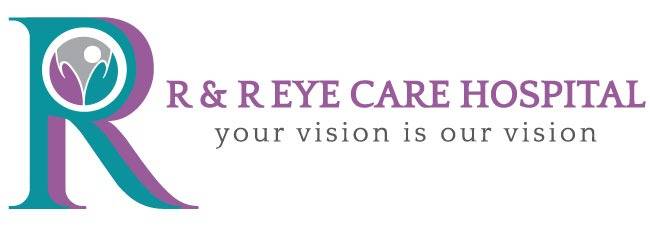Glaucoma Test
The eye is considered to be the most sensitive organ of the human body. Similar to all other body parts, there are several eye diseases like glaucoma, cataract, diabetic retinopathy, strabismus, and more. In this blog, we will bring under purview the types, steps, procedures, and advantages of glaucoma testing. However, before we move any further, let us understand the fundamentals of glaucoma.
In simple terms, glaucoma is referred to as a group of eye conditions that harm the optic nerve, this is imperative for good vision. In most cases, this damage is caused by unusually high pressure in the eye.


When it comes to glaucoma eye testing, the diagnosis process must be carried out with precision. If glaucoma is detected at an early stage, it can be treated appropriately else, several patients need treatment for the rest of their lives. Here is a brief insight into multiple types of glaucoma:
- Congenital glaucoma
- Acquired glaucoma
- Open-angle glaucoma
- closed-angle glaucoma or angle-closure glaucoma
- Secondary glaucoma
Before starting the treatment of any disease, it is imperative to have a well-defined diagnostic procedure in place. Since it serves as a solid base for doctors to guide the entire treatment process, the testing stage is considered a crucial part in the medical sphere. Generally, glaucoma is diagnosed with a cluster of multiple tests, often referred to as a comprehensive eye examination. Mostly, these examinations are carried out by expert ophthalmologists who specialize in preventing and treating eye diseases. Here is what the above-mentioned eye examination includes:
Tonometry: The patient will sit in an examination chair next to a specialized microscope known as a slit lamp during a tonometry test. To numb your eyes, your ophthalmologist or other healthcare professional will use eye drops.
The doctor will then place your chin and forehead on the chinrest of machine and with the help of a tiny air puff, this instrument gauges ocular pressure, causing no harm to the eye.
The peripheral (side) vision is measured by perimetry, sometimes referred to as a visual field test. The patient will be instructed to stare directly ahead at a screen during perimetry. Eventually, small lights blinking in different positions will be shown to patients.. While keeping an unwavering gaze forward, the patient is asked to alert the provider as soon as they spot this light or image by pressing a button
Pachymetry: The patient will first receive drops to numb their eye, just like in a tonometry exam. The assigned doctor will then place a pachymeter, a tiny instrument, on the patient’s eye in order to measure the corneal thickness.
The chances of developing glaucoma may be higher if the patient has thin cornea.
Gonioscopy: The healthcare professional will use eye drops during this examination to numb the eye. Then, your doctor will place a hand-held contact goniscopic lens.
The lens includes a mirror on it so the physician can observe the interior of the eye from various angles. It can demonstrate if the iris-cornea angle is too broad (perhaps indicative of open-angle glaucoma) or too small (a possible sign of closed-angle glaucoma).
Dilated Eye Exam: The doctor will use drops in your eyes to dilate pupils for this test. Additionally, the ophthalmologist will examine your optic nerve and look for damage using a gadget integrated with a light and magnifying lens.
In the next step, the ophthalmologist will thoroughly look into the results of the glaucoma testing. However, if the doctor concludes that you have glaucoma, they might recommend one or more of the below-mentioned treatments:
Laser treatment: This is used to create opening in the iris to circulate the extra fluid from the eye(in closed angle type). Usually carried out in a hospital or the outpatient surgery centre, the glaucoma patient might have to continue taking medicines even after the surgery.
Drainage tube implant: In this type of surgery, a plastic tube is positioned in the eye to drain all the excess fluid.
Medicines: To lower eye pressure, doctors prescribe medicines either in the form of eye drops or pills.
What Happens After Glaucoma Testing?
Once the process of glaucoma testing is complete, the person may have some restrictions and guidelines to follow. For instance, a patient’s vision might turn blurry for a while, so ensure you have some help to drive you home.
On the other hand, in case of a dilated eye exam, the patient may need to wear sunglasses to safeguard their eyes from ultraviolet rays and sunlight. However, if you still have doubts about what you can do or not do, it is best to reach out to your doctor and ask for instructions.
R&R Eye Care Hospital: Marking Seven Years of Exceptional Eyecare
Since 2004, we have built a name for ourselves for offering the best eye care treatments like oculoplasty, cataract surgery, refractive surgery, Lasik, PDEK, and more. At R&R Eye Care Hospital, we are equipped with world-class technology and a technical team who are driven to offer personalized care with a team of over 400 highly experienced doctors.
We offer exceptional eye care across the globe at our 110+ hospitals in 11 countries. To know more about our services and facilities, explore our website today!
FAQ
-
Where can I find glaucoma testing near me?
To find glaucoma testing near you, you can get in touch with your nearby eye care clinics and hospitals that are known for their ophthalmological technology and services. To do this, you can visit their websites and look for their contact number to book an appointment at the earliest.
-
What are the different types of glaucoma testing methods?
As mentioned above, glaucoma testing is used to determine whether the optic nerve is injured or damaged. In the medical sector, there are several ways of glaucoma testing like:
Visual field test Eye pressure check Optic nerve imaging
Dilated eye examination
Corneal thickness measurement -
When does one need glaucoma testing?
A person may require thorough glaucoma eye testing in case they are experiencing problems with their vision like:
Rainbow circles while looking at lights Eye pressure or pain Tunnel vision
Blind spots
Blurry vision
Red eyes
family history of Glaucoma -
Are there any risks of glaucoma testing?
Glaucoma testing is completely safe and doesn’t involve any risks. However, your vision might be blurry right after the test, but it improves with time.
-
What happens in testing eye pressure?
Eye pressure check is a type of glaucoma testing that is carried out under the supervision of expert professionals working in the ophthalmological field. One of the most crucial glaucoma symptoms is an increase in ocular pressure. Your ophthalmologist will use eye drops to numb the surface of your eye before performing an eye pressure test. After that, they flatten the cornea of your eye with a little tool to detect the pressure. This type of glaucoma testing doesn’t hurt, and only takes a few minutes. But throughout the test, you must remain calm and still. In addition, applanation or tonometry are other names for this examination.
-
What does different glaucoma testing indicate?
Your ophthalmologist will go over the test results and their implications with you. To assess whether you have glaucoma or are at risk of developing it, your doctor will consider all glaucoma testing results. Results outside the healthy normal range may point to glaucoma or the need for additional testing. Here’s what abnormal test outcomes could show:
Gonioscopy or angle examination: Narrow or obstructed drainage angle (all areas where the eye fluid drains).
Having a thin cornea increases your chance of developing primary open-angle glaucoma, as measured by pachymetry. A dilated eye exam detects abnormal blood vessels in your eye, both in size and shape.
Eye pressure: This is used to detect whether intraocular eye pressure is more than 22 millimetres.
Imaging of the optic nerve: Used to detect any retinal nerve fibre thinning around optic disc
Visual field test: The detection of certain regions in which your visual field has decreased


